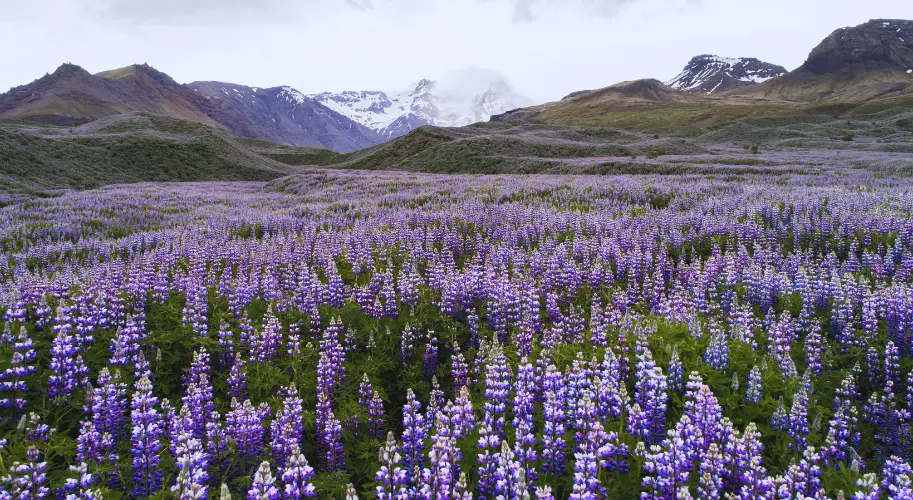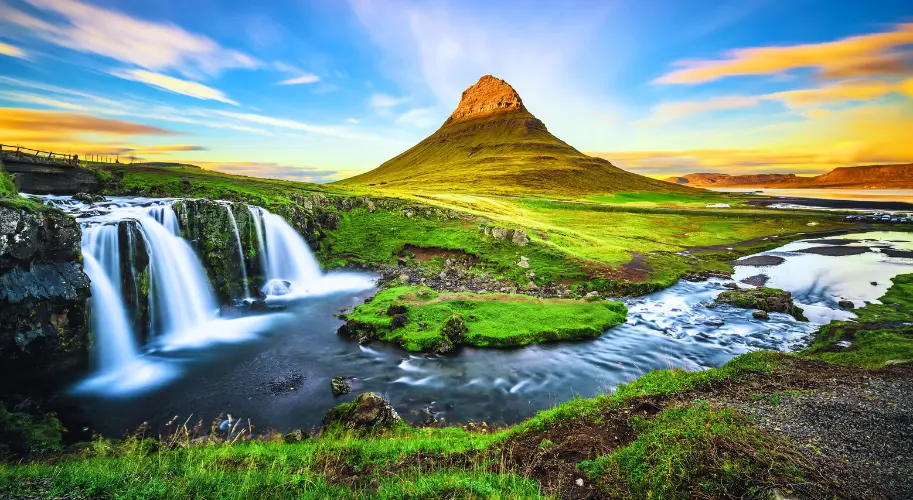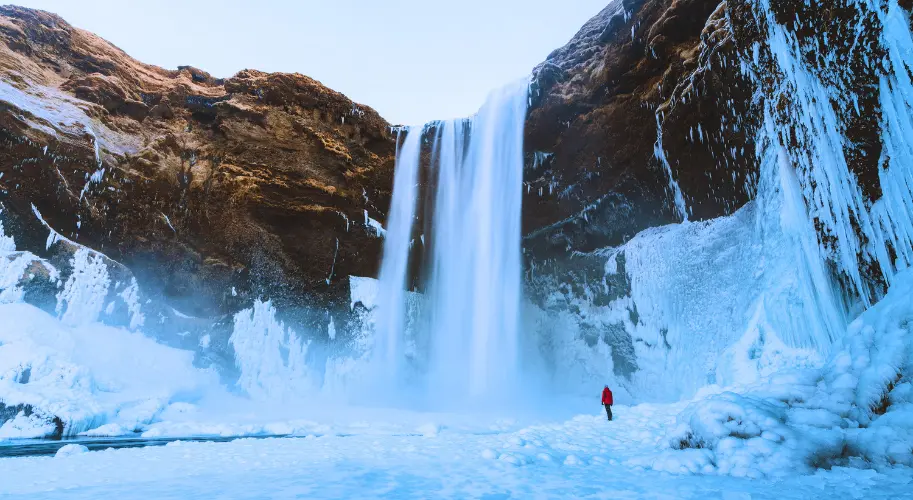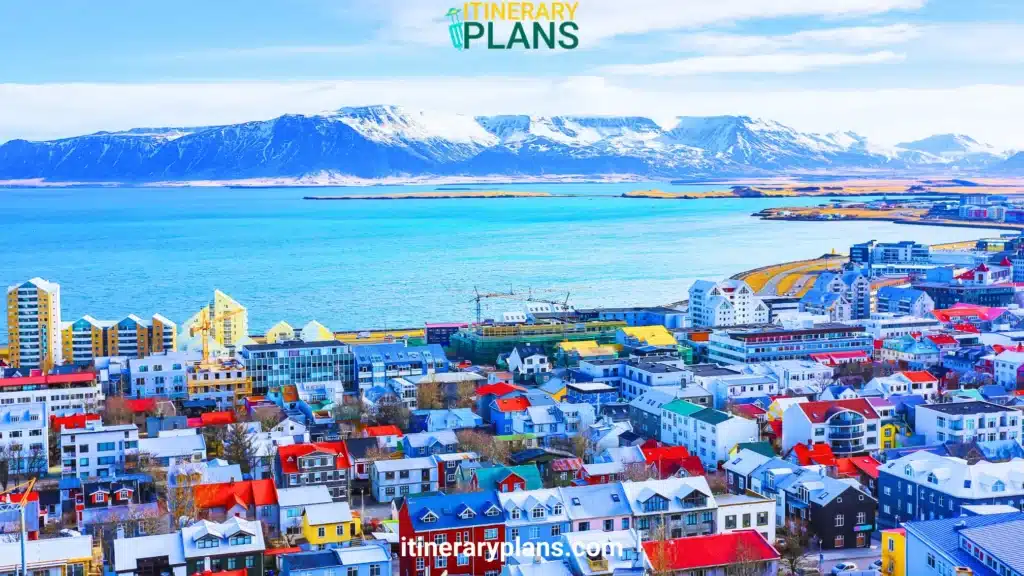Iceland is a country that offers some of the most dramatic and unique landscapes in the world. From glaciers to volcanoes, geysers to waterfalls, it’s a dream destination for many travelers. But the best time to visit Iceland can vary depending on what you’re hoping to experience. Whether you’re looking to see the Northern Lights, explore lava caves, or simply enjoy Iceland’s stunning beauty, timing your trip right can make all the difference.
This guide will help you understand the best time to travel to Iceland and what each season has to offer.
Table of Contents
Iceland Map
Why Timing Matters in Iceland
Iceland’s weather can be unpredictable and extreme, even in the summer months. The country is located just below the Arctic Circle, which means the weather is heavily influenced by its geographical location. Its natural beauty also changes drastically with the seasons. Understanding the best time to visit Iceland depends on what you’re hoping to experience. Are you looking for vibrant landscapes with endless daylight, or are you hoping to experience the northern lights in the winter?
Here’s what you need to know about the best time to travel to Iceland for different types of adventures.
Spring (April to June): The Perfect Transition

Why visit in spring?
Spring in Iceland is a season of transition, where the long, dark winter days begin to give way to the bright and longer days of summer. While the weather can still be chilly, it’s far more mild compared to winter. Snow begins to melt, and the country’s landscapes start to bloom with lush greenery, making it a great time to explore.
What to expect:
- Milder weather: While temperatures are still cool (between 0°C and 8°C), it’s much more comfortable than in winter.
- Fewer tourists: Spring is a shoulder season in Iceland, so the crowds are thinner. This means you’ll enjoy popular attractions like the Blue Lagoon, Gullfoss waterfall, and Thingvellir National Park without the crowds.
- Northern Lights: You still have a chance to see the Northern Lights in spring, especially in April, before the days get too long.
- Wildlife: Spring is the time when Iceland’s birdlife starts to return. If you’re a bird watcher, you can spot puffins, which are one of Iceland’s most famous birds.
- Hiking opportunities: Many hiking trails that were closed for the winter start to open up, and the landscape, with a mix of snow and budding greenery, is quite spectacular.
What to do:
- Visit waterfalls: Iceland’s many waterfalls are particularly beautiful in spring as the snow melts, and they flow with more water than at other times of the year.
- Explore the Golden Circle: The Golden Circle, one of Iceland’s most popular tourist routes, is perfect in spring for exploring geysers, waterfalls, and hot springs.
- Relax in geothermal pools: Iceland is known for its hot springs, and in spring, you’ll have a relaxing soak in the pools without the large crowds.
Summer (June to August): The Land of Midnight Sun

Why visit in summer?
Summer in Iceland offers the most favorable weather conditions, with long daylight hours, milder temperatures, and a chance to see the country at its most vibrant. If you’re looking to experience Iceland’s raw, untouched nature, this is the time to go.
What to expect:
- Midnight Sun: From late May to early August, Iceland experiences nearly 24 hours of daylight, known as the midnight sun. This means you’ll have extra time to explore and enjoy the country’s beautiful landscapes.
- Warmest weather: Summer temperatures range from 10°C to 15°C, though it can occasionally rise above 20°C (especially in July). It’s the best time to visit for outdoor activities, such as hiking, camping, and exploring the Icelandic Highlands.
- Festivals: Iceland’s summer months are packed with festivals, including the Icelandic National Day (June 17th) and various music and cultural festivals. This is a great time to experience Icelandic culture.
- Wildlife and Nature: Summer is also the best time to spot wildlife. You can see puffins, whales, seals, and other animals that migrate to Iceland during the warmer months.
- Tourist season: Summer is peak tourist season in Iceland, meaning some of the more popular spots may be crowded, but the overall atmosphere is vibrant and full of life.
What to do:
- Hike the Highlands: The Icelandic Highlands are only accessible in summer due to the weather, so this is the time to embark on hiking adventures. Trails like Laugavegur and Fimmvörðuháls offer spectacular views of volcanoes, glaciers, and geothermal fields.
- Explore ice caves: Summer is also a good time to visit ice caves, which are formed when melting ice sheets create intricate tunnels. You can take a guided tour to experience these otherworldly places safely.
- Whale watching: Summer is prime time for whale watching, especially along the coast in places like Husavik.
- Drive the Ring Road: Iceland’s famous Ring Road, which circles the entire country, is best explored during the summer months when all roads are open.
Fall (September to October): The Golden Season

Why visit in fall?
Fall in Iceland is a time when nature turns into a palette of warm oranges, reds, and yellows. This is a quieter season in terms of tourism, which means you’ll get to enjoy the attractions with fewer crowds while still experiencing some of the best weather conditions of the year.
What to expect:
- Northern Lights: Fall is one of the best times to see the Northern Lights. The nights start getting darker, and the lights are more visible as the sky clears up.
- Autumn colors: Iceland’s landscapes transform during the fall, as the moss-covered lava fields and forests take on shades of gold, red, and orange.
- Lower prices: Fall is the beginning of the off-season, so prices for flights and accommodations begin to drop.
- Weather changes: The weather begins to cool down in September and October, with temperatures ranging from 2°C to 10°C. It’s a good idea to pack warm clothing and rain gear, as rainfall can be frequent.
What to do:
- Photography: With the fall foliage and the Northern Lights, this is a fantastic time for photographers to capture Iceland’s beauty.
- Enjoy fewer tourists: Visit popular destinations like the Golden Circle or South Coast and enjoy them without the summer crowds.
- Take a road trip: If you prefer driving, fall is an excellent time to drive the Ring Road or explore remote areas of Iceland, as the roads are still in good condition but less busy.
Winter (November to March): For the Adventurous Traveler

Why visit in winter?
Iceland in winter is a whole different world. The country transforms into a winter wonderland with snow-covered landscapes, frozen waterfalls, and shorter daylight hours. If you’re an adventure-seeker or hoping to experience the unique beauty of Iceland in its winter glory, this is the time to go.
What to expect:
- Northern Lights: Winter is the peak season for viewing the Northern Lights, as the long, dark nights make the lights more visible. If you’re after the Northern Lights, this is by far the best time to visit.
- Winter activities: Iceland is known for its winter activities, such as snowmobiling, ice climbing, and exploring ice caves. The icy terrain offers plenty of opportunities for those who are up for a thrilling experience.
- Frozen waterfalls: Some of Iceland’s most famous waterfalls, like Gullfoss and Skogafoss, freeze over in winter, creating stunning ice formations.
- Winter landscapes: The snow-covered landscapes in Iceland’s national parks, glaciers, and mountains are breathtaking and offer an entirely different perspective than in summer.
- Cold weather: Temperatures range from -1°C to 4°C, but with wind chills, it can feel colder. Iceland is known for its unpredictable weather, so be prepared for snowstorms and sudden changes in conditions.
What to do:
- See the Northern Lights: Winter is the best time to catch the Northern Lights, especially from remote locations away from city lights.
- Explore ice caves: Iceland’s ice caves are accessible in winter, providing an unforgettable experience. These natural structures are carved by glacial rivers and are some of the most unique natural wonders you’ll see.
- Visit a glacier: You can also explore glaciers in winter, either by hiking or taking a snowmobile tour.
- Experience winter festivals: Iceland celebrates Christmas and New Year with traditional festivals and events, making it a magical time to visit.
Conclusion: When Is the Best Time to Travel to Iceland?
The best time to travel to Iceland truly depends on what you want to experience. If you’re looking for the best weather and the ability to explore Iceland’s natural beauty to its fullest, summer (June to August) is ideal. On the other hand, if you’re hoping to witness the Northern Lights and enjoy a quieter, more serene experience, fall (September to October) or winter (November to March) would be your best bet.
Each season offers its unique advantages, so whether you want the long days of summer or the magic of winter’s frozen landscapes, Iceland will always leave you awe-struck. Choose the time that best aligns with your travel goals, and get ready for an unforgettable adventure!
Popular & Historical Place in USA
The 15 Best Zoo in the US || Memorial Day Weekend Getaways || 7 Best Places to Stay in Colorado || 13 Awesome Places To Visit Near Las Vegas || 12 Cheap Weekend Getaways In Georgia || The 18 Best Couples Vacations USA || 10 Romantic Places In Boston For Couples || 12 Most Romantic Getaways In Michigan || 8 Romantic Getaways In Northern California For Couples || 12 Romantic Weekend Getaways in Ohio || 25 Things to Do in New York City
FAQs
.
Q: What is the best time to travel to Iceland for the Northern Lights?
A: The best time to travel to Iceland for the Northern Lights is from September to March, when the nights are longer and darker.
Q: When is the best time to travel to Iceland for hiking?
A: The best time to travel to Iceland for hiking is during the summer months (June to August) when the weather is milder and most trails are accessible.
Q: What’s the best time to visit Iceland for fewer tourists?
A: The best time to travel to Iceland for fewer tourists is in the shoulder seasons, particularly late spring (April to June) and early fall (September to October).
Q: Can I visit Iceland in winter?
A: Yes, winter (November to March) is perfect for experiencing Iceland’s winter wonderland, including snow, glaciers, and the Northern Lights.
Q: What is the best time to travel to Iceland for good weather?
A: The best time to travel to Iceland for the best weather is during summer (June to August), when temperatures are warmer and days are longer.
Q: Is it possible to see waterfalls in Iceland in winter?
A: Yes, many of Iceland’s waterfalls, like Gullfoss and Skogafoss, look stunning in winter with frozen edges and snow-covered landscapes.

